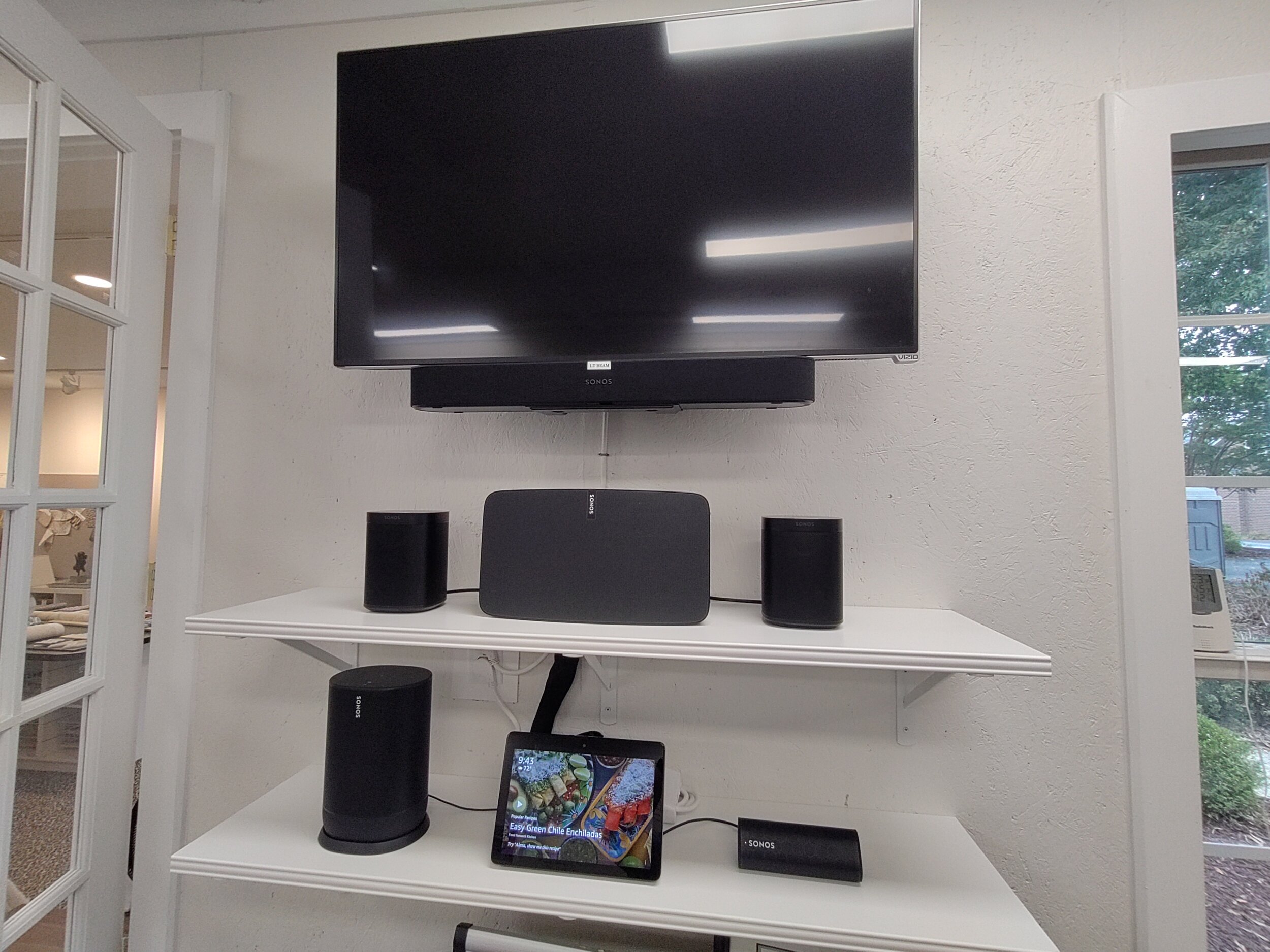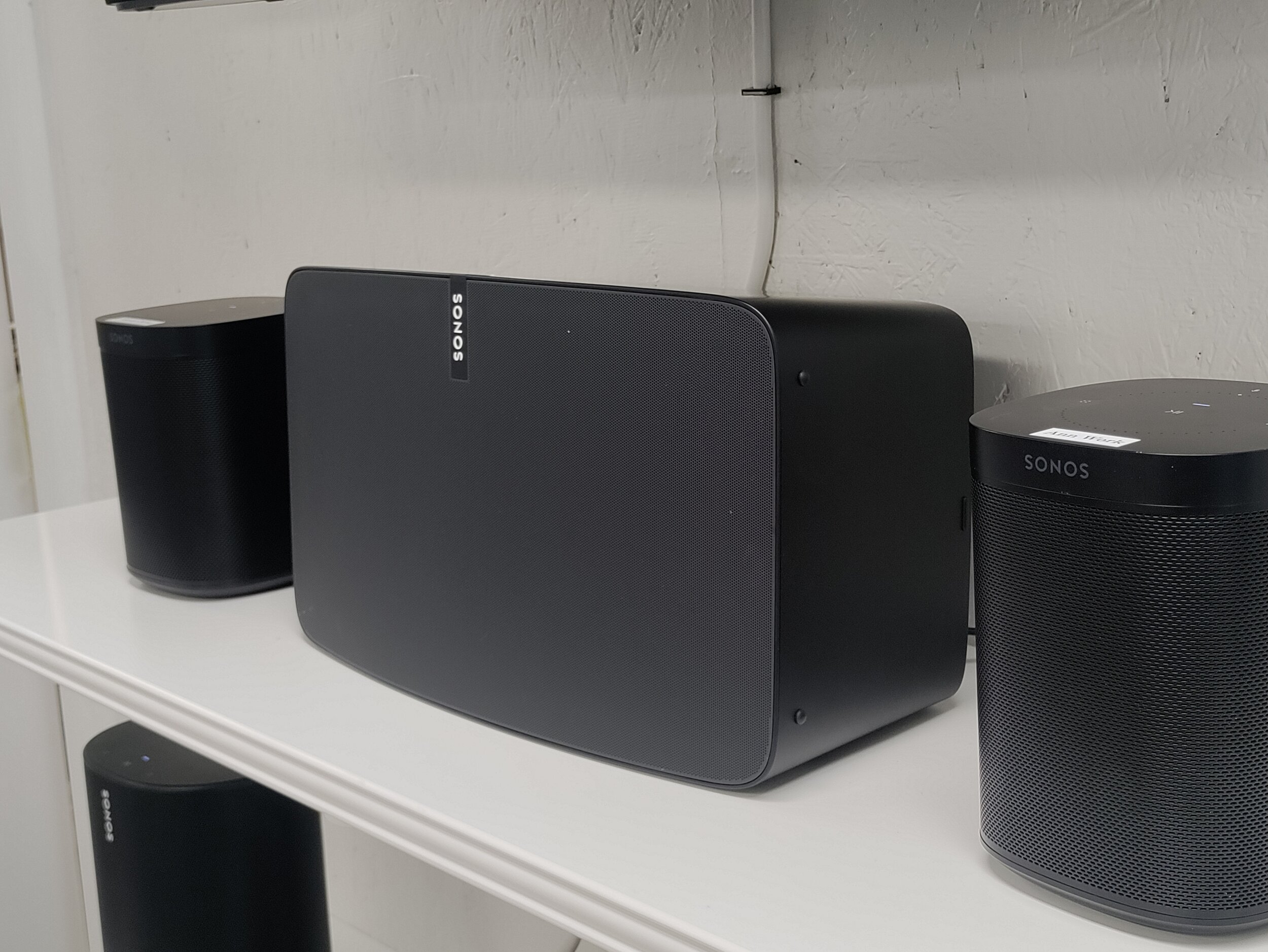Sound Convenience
Sonos’ wireless speaker range is the best combination of convenience and quality currently available for the home music listener. High quality built-in components, a lack of speaker wires, and the ability to integrate with almost any system or service makes Sonos the best choice when looking to upgrade a home sound system.
The way that people listen to recorded music has changed a lot since the Phonograph was invented in 1877. From wax cylinders, to pressed vinyl, to tapes, to discs, to computer files, to streaming—listening to music has become easier and easier as the years have progressed. The argument could be made that convenience has been a primary factor in driving the development of playback technology. This can be seen the first time a radio was ever installed in a car, the first time a jogger went for a run with a Walkman on their hip, or the first time I ever shuffled a digital playlist on my first iPod. Convenience, then, is what most people look for when they listen to music. After all, most music listening is done passively—on the way to work, at the gym, while studying for a test. But what happened to the chase for quality? To not just listen to music, but to also experience it by squeezing every last detail out of the recording.
I can attest that it still exists, but to the average listener, it’s not very attainable. A high-fidelity (Hi-Fi) listening setup can cost thousands if not tens of thousands of dollars. My personal Hi-Fi setup uses a vinyl turntable, tube driven pre-amp, an old style box receiver, and a set of huge tower speakers. While I have my ways of saving money when I built this system, it still wasn’t cheap. Not only that, the setup requires constant engagement. I have to be right in front of it if I want to adjust the volume, change track, flip the record, or change album altogether. Though similar sound systems do exist that have Hi-Fi music streaming capability, there’s still the issue of wires everywhere and a need for dedicated space for the equipment. I may have the patience and love for music to deal with these inconveniences, but the average person probably does not.
So what’s the cure, doc?
This is where Sonos comes into play. The main idea behind their speakers is to produce high quality music playback that blends seamlessly into a given environment while also taking up as little space as possible. Each speaker in their lineup uses high quality amplification and sound drivers to produce rich sound output in a compact form factor. In other words, everything is built into the speaker, so there’s no need for an external amplifier/receiver. Furthermore, the only cable needed is a power cable—no speaker wires in sight.
Not only is Sonos a speaker company, it’s just as much a technology company. Their speakers use a home Wi-Fi signal and smartphone app to control listening, which means that a breadth of services are available to stream music. Is Spotify or Apple Music not cutting it for you when it comes to streaming quality? Link your Tidal account instead. Flexible hardware integration allows for older sound system components to be used with Sonos as well. The Sonos Port, for instance, can allow a turntable, cassette deck, or CD player to wirelessly send its audio output to Sonos speakers around the house. Alternatively, a Sonos Amp can allow an old integrated speaker system (such as fixed wall/ceiling speakers) to stream music. The modularity and flexibility of Sonos covers almost any audio need.
Speaking of modularity, the Sonos product line all works together no matter the setup. If a single speaker is all that’s needed for a space, then a single speaker is all you need to buy. However, want stereo? Buy two and enable left and right audio in the controller app. Want a full surround sound experience? Buy a full set with center, left & right front, and left & right rear speakers. Craving more bass? Add a subwoofer. Want to experience TV and movies like the action is happening in the room with you? Add a soundbar and sync it to your surround speakers. No matter the need, Sonos will work.
LegetteTech uses Sonos in its own office, both as a way to demo the speakers for clients, and because we all enjoy listening to music while we work. Our showroom shelf features a Beam soundbar, two model Ones as a stereo pair, a model Five, a Move, and a Roam.


LegetteTech’s owner, Wade Legette, uses Sonos extensively throughout his own home as well. Each main TV uses an Arc soundbar with a One stereo pair for 5.0 surround sound. Other rooms in the house use individual One speakers for general music listening.
Sonos is the best solution for a modern sound system, allowing the user to build and integrate a system that works for them. It meets the needs of anyone who wants ease and immediateness of use, as well as the needs of a sound connoisseur. And it will keep the design and organization-minded household members happy with its sleek, low-profile, and wireless form factor. Feel free to reach out to LegetteTech with any questions or help getting your own Sonos system up and running.

